Little Throwaways That Have a Big Impact on Waste
Posted on Jul 25th 2019
Little Throwaways That Have a Big Impact on Waste
As your company grows, so (typically) does your waste. The companies we work with always seem to be looking for new ways to up their sustainability game - sourcing better inputs to their products, improving their packaging, instituting a composting program.
It is easy (and understandable) to focus on the big things, elements directly related to your product and customer experience or elements that are “in your face” (think pallets or your energy consumption).
The little things often go unnoticed, or don’t have quite the same bang for your buck as the larger changes do. But the little things can add up. And when you start making changes to those little things, that is when organizational culture becomes truly rooted in sustainability and conscious consumption.
Here are 6 little throwaways in many office environments that can add up, and tips on how to go Zero Waste (or close to it!) for each of them.
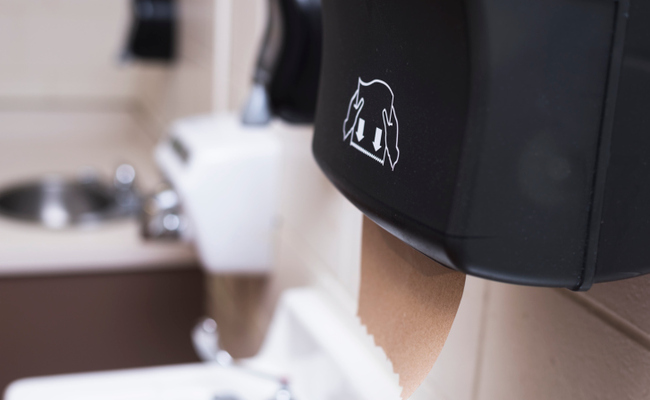
1. Paper Towels
It is astounding how many paper towels a person can go through in a day! I’m certainly guilty of it. In everything from cleaning up the counter to drying hands in the bathroom to covering that bowl of soup in the microwave -- the paper towel is just so easy to reach for.
If you have 20 employees, and each employee goes through 10 paper towels a day, that is 200 paper towels a day - 50,000 a year! That is almost 1,200 paper rolls - about 850 lbs of paper towels - annually!
The easiest and best way to eliminate that waste altogether is to stop buying paper towels for the office. Switch to dish towels, rags and durable sponges, and get a schedule in place to wash them (or find a service that will do this for you if needed).
The second approach is simply to cut back on paper towel usage by encouraging your employees to use one towel per use. It is so easy to pull three or four when you only need one. Last year EcoEnclose had a month long paper towel competition, asking folks to record their paper towel usage daily and we rewarded the weekly winner (i.e. the one with the LOWEST number!) with a gift certificate. More than anything, this process raised individual awareness of how often they reached for the roll!
Don't forget to responsibly dispose of paper towels. They typically cannot be recycled, because they are usually made from paper that has already been recycled many times, so their fibers are too short to be reclaimed and reused. However, they can be home or industrially composted.
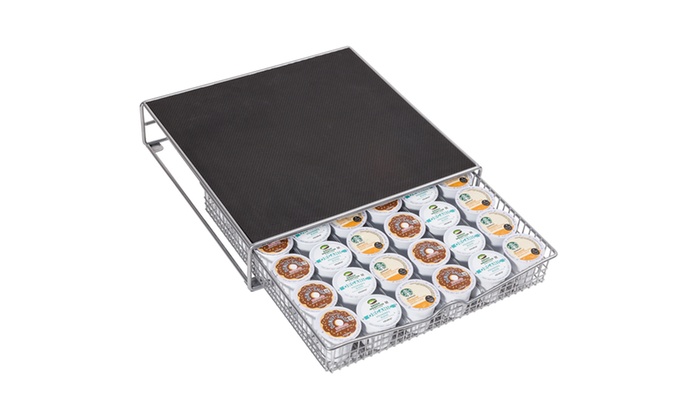
2. Coffee Pods
Today, over 40% of households and countless offices use some sort of coffee pod system such as a Keurig or Nespresso.
If you have 20 people in your office each day, and each person goes through an average of two cups of coffee daily (perhaps a conservative estimate?) -- you’re looking at 1,000 lbs of waste generated annually from your coffee pod habit.
As with many Zero Waste changes, the most sustainable strategy is to step backward in time and buy a drip coffee maker. Find a reusable filter and don’t forget to compost your grounds if you have access to the right composting system. Or consider an Aeropress or Clever Coffee Dripper type of system (which would require you to get an electric water kettle as well).
If you or your team is truly stuck on the coffee pod habit, then find ways to reduce the waste you generate. See if out if your local recyclers will accept your pods for recycling and then train your team to follow instructions on how to recycle. The recycling process typically requires that you peel off the aluminum and then discard the coffee grounds, so you are only recycling the plastic cup part of the pod.
If your local recycler doesn’t take these pods, your next step might be to find a “send back” program like Keurig's (their program is currently being rolled out). Alternatively, if you have a compost element to your waste management program consider compostable coffee pods instead, such as Tayst Coffee or PurPod.
![]()
3. Label and Sticker Release Liners
Release liners are everywhere. Certainly, they are on your shipping labels. You may also be using them to label or brand your products and packaging. What exactly is a release liner?” Fair question. One that we get a lot.
But we’d bet you already know what a release liner is. A release liner is a paper or plastic-based film sheet (usually applied during the manufacturing process) used to prevent a sticky surface from prematurely adhering. You know release liners as the backing that keeps stickers and band-aids sticky until you’re ready to apply them. Globally we use, and subsequently throw away, more than 60 billion release liners every single year. Traditional release liners are silicone coated and extremely difficult to recycle, so they inevitably end up in the landfill by the billions.
A company that sends out 200 packages a day will generate over 400 lbs of release liner waste every year (on shipping labels alone!).
We are so thrilled to offer the first ever sustainable, plastic-free alternative.
Our Zero Waste Release Liner is made with 100% post-consumer waste and is curbside recyclable along with your office paper. It is available on Shipping Labels as well as Custom Branded Stickers and Product Labels.
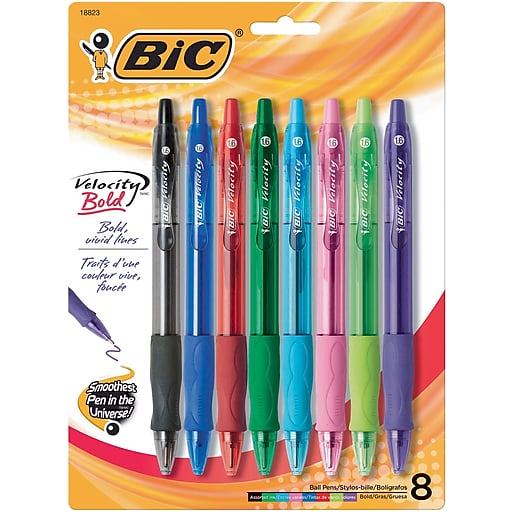
4. Disposable Pens
According to the EPA, Americans throw away 1.6 billion disposable pens every year. That sounds like a big number...but it is pretty easy to understand why and how this can happen. Just think about your own house and office. As often as you find yourself searching for a pen, you probably just as frequently find yourself staring at dozens of pens of all sorts of colors and usability (of course for some reason whenever you need the pen, you can’t find those dozens).
If an average office worker goes through (i.e. loses!) two disposable pens a week, an office of 20 people generate 200 lbs of waste in pens every year.
Consider providing your team with refillable fountain pens (with refill cartridges easily handy) instead. Build a culture of “holding onto” and “respecting your pen” with these more expensive, more durable, timeless writing pieces. Mechanical pencils are another interesting writing alternative, as are pencils made with sustainably harvested wood. If disposable pens are the only way to go in your office, look for those made with as much recycled content as possible. Recycled pens can be made with paper, plastic or a combination of the two.
Then, find a way to recycle those pens!
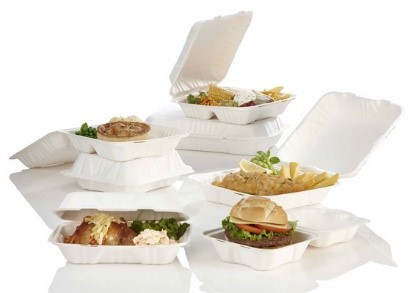
5. Foodware
Does your team regularly go to fast casual spots for takeout? Or food trucks? Or perhaps they bring in store bought ready-to-heat meals? Do you supply disposable cutlery? What your team brings in to eat for lunch is pretty personal, and it can be uncomfortable to try to influence others to change these individual habits.
But, as almost any office kitchen will demonstrate, waste from lunch adds up!
One fun approach? Gift each employee with a “zero waste meals-to-go kit” ( like this one from EarthHero) complete with reusable take out containers, cutlery, straws, a reusable water bottle and coffee mug, and napkin. Set up a shelf in the office where people can store their kits (labeled with their names...think school cubby!). And create a social environment that rewards your team for using their zero waste kits.
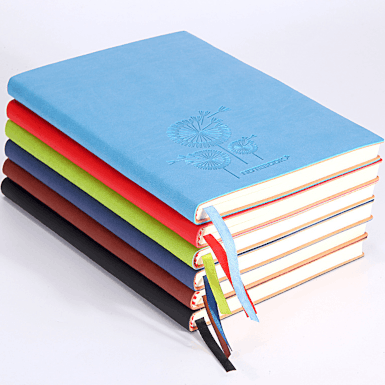
6. Half-Used Notebooks
It seems like everyone loves a fresh, new notebook. Yes, even in the days of digital writing and communication. And I get it. It is such a great feeling - one of new possibilities - to open that first blank page in a clean notebook. If left to their own devices, I’d bet each of our team members would start a fresh notebook every month, even if their existing notebook is still only half written in. That is over 200 lbs of wasted paper each year for a team of twenty.
One way to support less notebook waste? Buy smaller notebooks that folks can go through more quickly before they tire of them. Or make it a policy that a team member can’t get a new notebook from the office supply closet until they’ve actually used up their existing one. And of course, look for eco-friendly notebooks that can be readily recycled when done. Decomposition Books and Scout Books are two such examples.
The fun part is that once you start making small sustainability changes...you see new opportunities for improvement everywhere!



